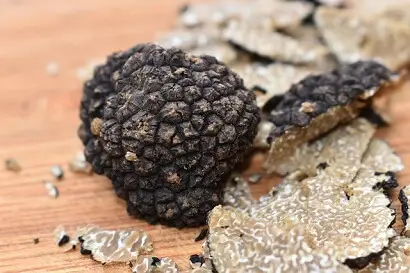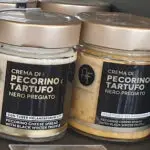Truffles are one of the most highly prized culinary delicacies in the world. These rare and exotic mushrooms are renowned for their unique aroma and flavor and are used by chefs and foodies alike to add a touch of luxury to their dishes. But when it comes to truffles, size matters.

The weight of a truffle can have a significant impact on its taste and value, making it an important factor in the truffle industry.
In this article, we’ll explore the world of truffle weight, including what it is, why it matters, and the factors that affect it.
Factors Affecting Truffle Weight
Truffles are a unique and highly valued type of fungi, prized for their pungent aroma and rich flavor. Their size and weight can vary greatly depending on a range of factors. Here are some of the key factors that can affect truffle weight:
Weather and soil conditions: The weather and soil conditions can have a significant impact on the growth and weight of truffles. For example, truffles need a specific temperature range and a certain amount of moisture to thrive. Drought or excessive rain can stunt growth or damage the truffle. Similarly, soil type and nutrient content can affect truffle size and weight.
Truffle variety: Different types of truffles have different weight ranges. For example, white truffles are generally smaller and lighter than black truffles. Within each variety, there can be further variations based on the factors mentioned above.
Age and maturity: Truffles grow underground and are usually harvested when they reach a certain level of maturity. The longer a truffle is allowed to grow, the bigger it will become. However, if a truffle is left to grow for too long, it can become overripe and lose its aroma and flavor.
Harvesting technique: The way truffles are harvested can also impact their weight. For example, if a truffle is accidentally cut or damaged during the harvesting process, it may be lighter in weight than a similar, undamaged truffle.
Overall, truffle weight is a complex issue that depends on a range of factors. Understanding these factors is key to cultivating and harvesting high-quality truffles. It is also important for consumers to be aware of these factors in order to make informed purchasing decisions.
Truffle Weight Variations and Characteristics
Truffle weight can vary widely depending on the type of truffle, where it is grown, and when it is harvested. For example, the average weight of a black truffle is around 20-30 grams, while a white truffle can range from 20 to 500 grams.
A 20-gram truffle is considered small, but it is a common size for many types of truffles. This size is perfect for home cooks who want to add truffle flavor to their dishes without breaking the bank. It’s also a popular size for restaurants, as it allows chefs to stretch their truffle budget while still adding a touch of luxury to their dishes.
White truffles, on the other hand, are much larger than black truffles. The average weight of a white truffle is around 30-60 grams, but it can grow up to 500 grams or more. The size and weight of a white truffle depend on where it is grown, the weather conditions during the growing season, and when it is harvested.
The largest white truffle ever found weighed a whopping 3.3 pounds (1.5 kilograms). It was discovered in Italy in 2014 and sold for $61,000 at auction. This truffle was a true marvel and attracted a lot of attention from foodies and truffle enthusiasts around the world.
While the size of a truffle can impact its price and rarity, it does not necessarily dictate its quality or flavor. Truffles of all sizes can have exceptional flavor and aroma. However, larger truffles tend to have a more intense flavor than smaller truffles. This is because the larger truffle has a more developed aroma profile and a higher concentration of aromatic compounds.
In conclusion, truffle weight varies widely depending on the type of truffle, where it is grown, and when it is harvested. While the size of a truffle can impact its price and rarity, it does not necessarily dictate its quality or flavor. Truffles of all sizes can have exceptional flavor and aroma.
Measuring Truffle Weight
Truffle weight is an important aspect of the truffle industry, and accurate measurement is crucial for determining pricing and grading. There are several ways to measure truffle weight, but the most common method is to use a digital scale.
When measuring truffle weight, it is important to clean the truffle to remove any dirt or debris that may affect the weight measurement. After cleaning, the truffle should be dried thoroughly before weighing.
Truffle weights are typically measured in grams, with most truffles ranging from a few grams to several hundred grams. Digital scales can accurately measure truffle weights to within a fraction of a gram, making it easy to determine the exact weight of a truffle.
In addition to using digital scales, truffle weight can also be measured by displacement. This involves placing the truffle in a container of water and measuring the volume of water displaced. This method is less precise than using a digital scale but can be useful for larger truffles that may not fit on a standard scale.
Measuring truffle weight accurately is essential for grading truffles and determining their value. Truffles are graded based on weight, aroma, and appearance, with larger and more aromatic truffles receiving a higher grade and commanding a higher price.
In conclusion, measuring truffle weight is a critical aspect of the truffle industry. Digital scales are the most common method for measuring truffle weight, but displacement can also be used for larger truffles. Accurate measurement is essential for grading truffles and determining their value in the market.
The Significance of Truffle Weight
Truffle weight is an important factor to consider when assessing the quality of a truffle. The size and weight of a truffle can affect the taste and aroma of the truffle, as well as its market value. Here are some reasons why truffle weight is significant:
Flavor and Aroma: The size and weight of a truffle can impact its flavor and aroma. Generally, larger truffles have a more intense flavor and aroma than smaller truffles. This is because larger truffles have more flesh and a stronger concentration of volatile organic compounds (VOCs) that give truffles their distinct aroma. When truffles are cooked, the heat releases these VOCs, intensifying the flavor and aroma. However, smaller truffles can still have a pleasant flavor and aroma and are often used in dishes where a milder truffle flavor is desired.
Culinary Applications: Truffle weight is an important consideration for chefs and cooks who use truffles in their dishes. The weight of a truffle determines how much of it can be used in a recipe. For example, a larger truffle can be shaved thinly over a dish, providing a more pronounced truffle flavor, while a smaller truffle may need to be finely chopped and added to a recipe to achieve the same effect. The weight of the truffle also determines how many servings it can provide, making it an important consideration for restaurant chefs.
Market Value: Truffle weight is a key factor in determining the market value of truffles. Larger truffles are often more valuable than smaller truffles, as they can be sold for a higher price per gram. In addition, larger truffles are often rare, as they are more difficult to find, adding to their value. This is especially true for white truffles, which are highly prized and can fetch thousands of dollars per pound.
Overall, truffle weight is a significant factor to consider when assessing the quality and value of a truffle. The size and weight of a truffle can impact its flavor, aroma, culinary applications, and market value. Chefs, cooks, and truffle enthusiasts alike should consider truffle weight when selecting and using truffles in their dishes.
The Biggest White Truffle Ever Found
The biggest white truffle ever found was discovered in Italy in 2014, in the region of Umbria. The truffle weighed a whopping 4.16 pounds (1.89 kg), making it the largest white truffle ever found. It was sold at an auction for a record-breaking $61,250. [1]
The truffle was discovered by a truffle hunter and his dog in the countryside of Umbria. It was so big that it took the hunter and his dog a while to dig it out of the ground. Once it was unearthed, it was carefully cleaned and prepared for sale.
The size of the truffle made it a media sensation, and it was featured in news articles and TV shows around the world. The high price paid for the truffle also drew attention to the truffle industry, highlighting the importance of truffle hunting and the high value placed on these rare and prized ingredients.
The significance of the biggest white truffle ever found goes beyond its size and value. It also demonstrates the power of nature and the importance of preserving the environment where these valuable ingredients are found. Truffle hunting is a delicate balance between finding and preserving these rare delicacies and ensuring that they are available for future generations to enjoy.
Bigger or Smaller Truffles?
The debate over whether bigger or smaller truffles are superior is a topic of much discussion in the culinary world.
On one hand, larger truffles are often more visually impressive and can be easier to work with in the kitchen. They also tend to have a higher yield, meaning more truffle per weight, which can be more cost-effective for the buyer. However, some argue that larger truffles are less flavorful and have a less intense aroma compared to smaller truffles. This is because larger truffles have a lower surface area to volume ratio, which means less of the aromatic compounds are exposed to the air.
On the other hand, smaller truffles are believed to have a more concentrated flavor and aroma due to their higher surface area-to-volume ratio. They are also rarer, which can increase their value and appeal to some buyers. However, smaller truffles can be more difficult to work with due to their size and may have a lower yield.
The size of a truffle is just one factor in determining its quality. Factors such as freshness, ripeness, and origin can also impact the flavor and aroma of the truffle. Additionally, personal preference plays a big role in determining whether bigger or smaller truffles are preferred.
In conclusion, the debate over bigger versus smaller truffles is a complex one. While larger truffles may have some advantages in terms of appearance and yield, smaller truffles can have a more intense flavor and aroma. At the end of the day, the best truffle is the one that tastes and smells the best to you.
Conclusion
Truffle weight is a crucial factor in determining the quality and value of truffles. Measuring truffle weight accurately requires specific tools and methods, which are essential for grading truffles and determining their market value. While larger truffles are generally more valuable, the debate over whether bigger or smaller truffles are better continues. Truffle weight is a critical aspect of the truffle industry, and its importance is unlikely to wane anytime soon.
References:
[1]: https://www.sothebys.com/en/auctions/ecatalogue/2014/white-truffle-n09231/lot.1.html
- The Top Restaurants Specializing in Truffle Dishes - August 10, 2023
- Truffle Panna Cotta: A Decadent Dessert Recipe for Truffle Lovers - August 7, 2023
- Truffle Scrambled Eggs: A Luxurious Breakfast Delight - August 7, 2023








